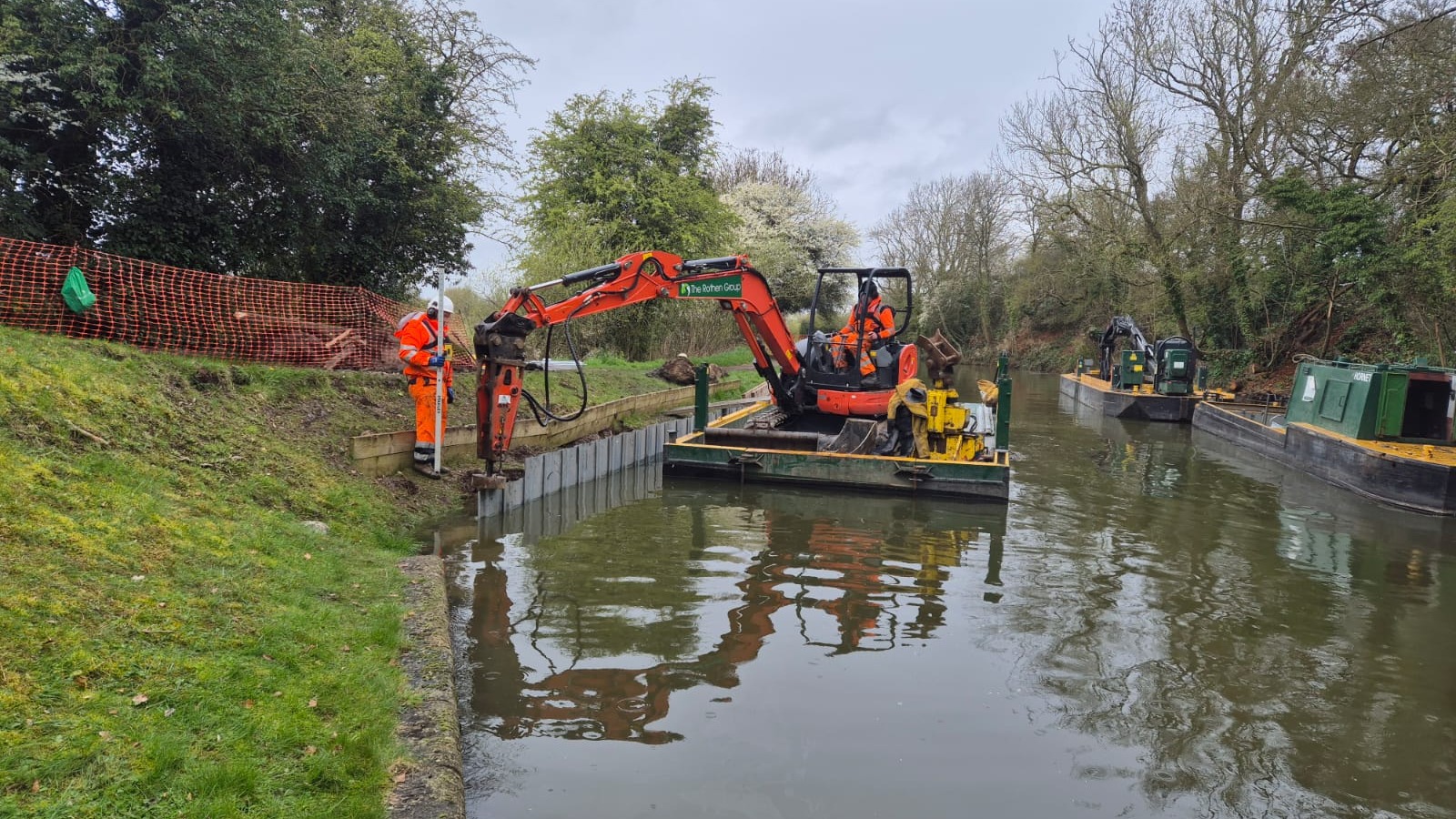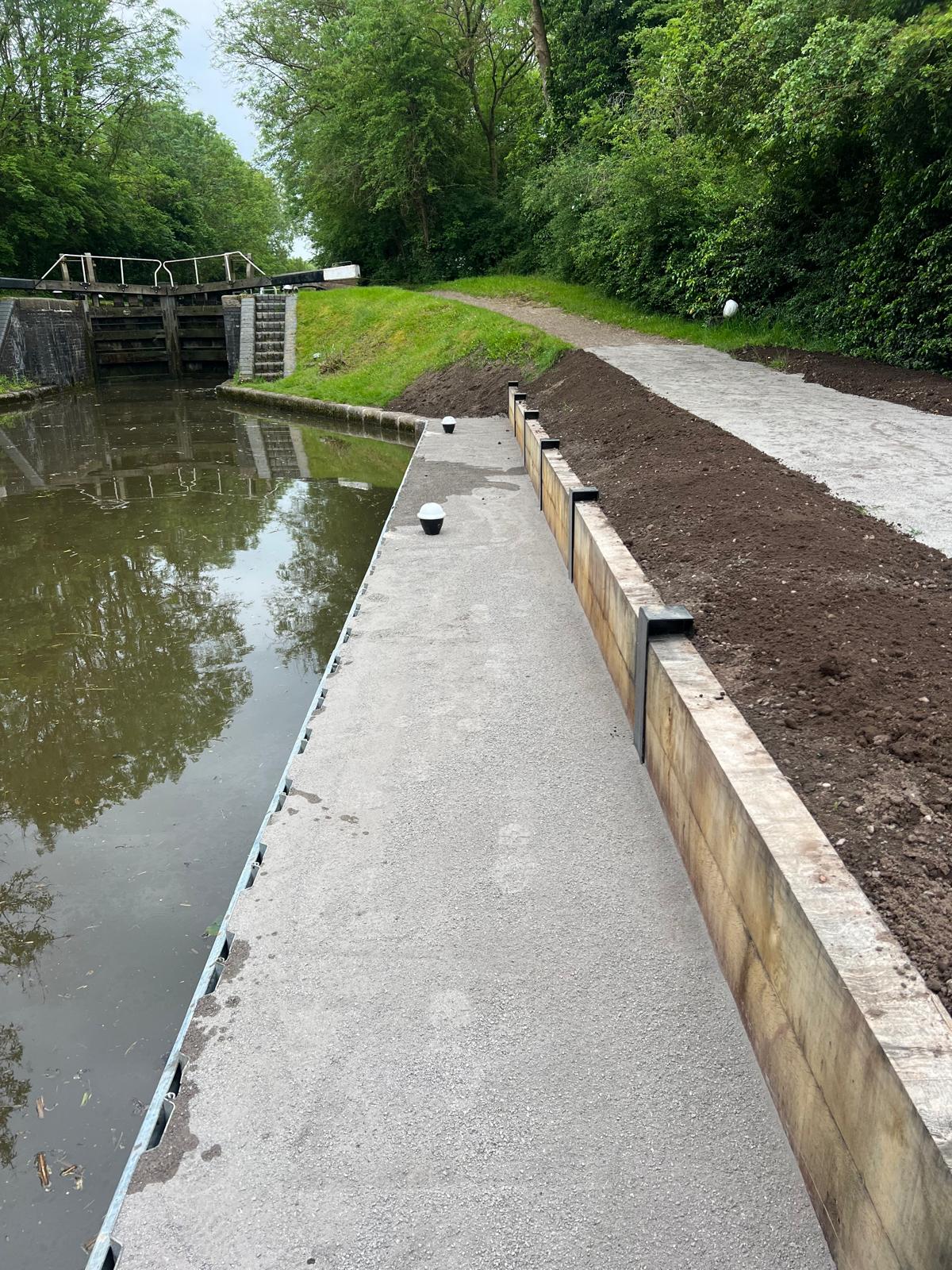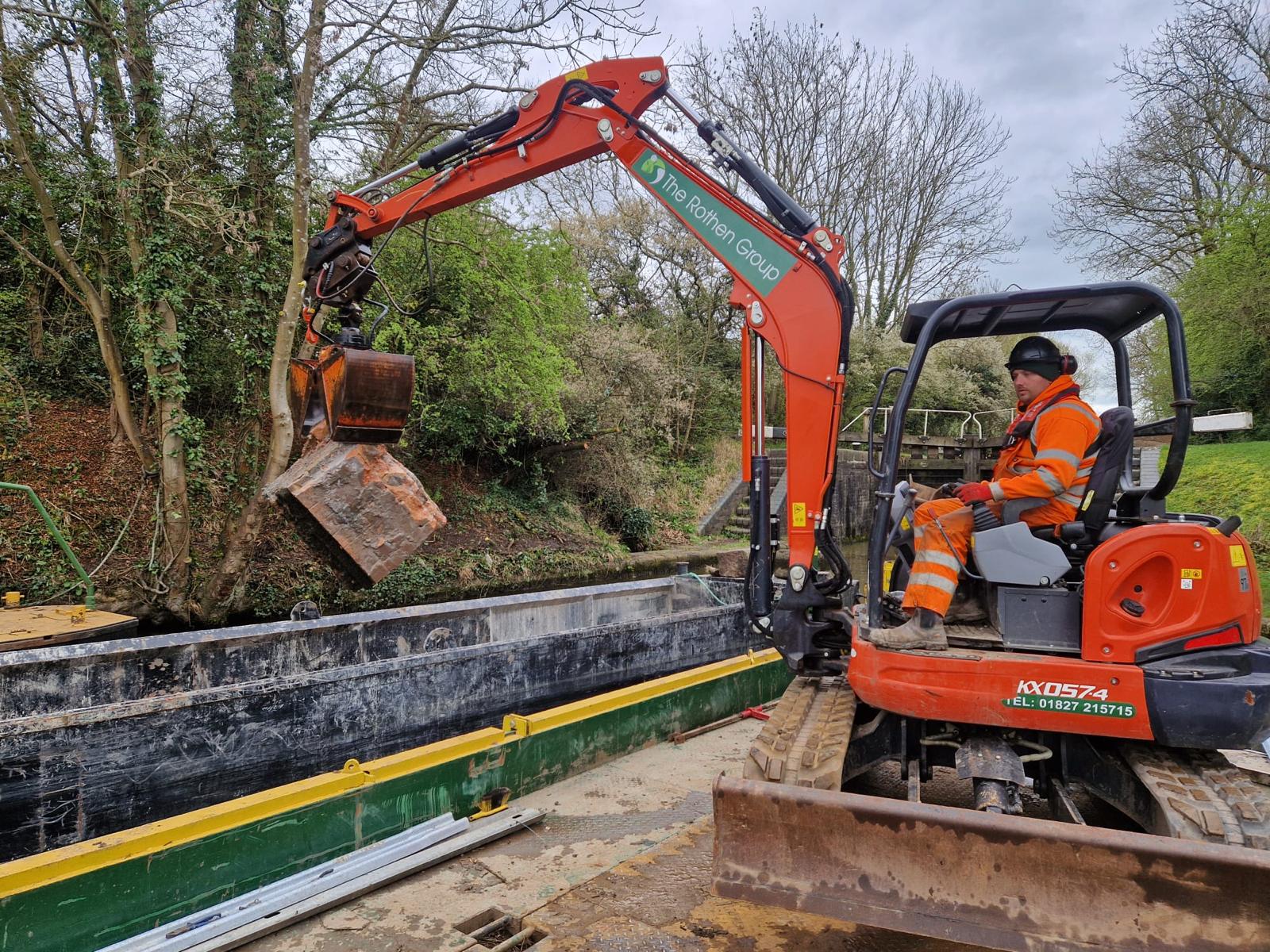
Specialist marine contractor Rothen Group and Jackson Civil Engineering have worked together to prevent the River Soar from merging with a section of the Grand Union Canal.
After high levels of rainfall caused the River Soar to flood, a member of the public drew down the section between Lock 37 and Lock 38 to create a barrier between nearby properties.
But the sides of the canal could no longer withstand the increased water pressure, damaging the sides and towpath.

Onboarding the Rothen Group
The Canal & River Trust, the charity responsible for upkeeping the UK’s waterways, contracted Jackson to undertake urgent repair works and prevent the situation worsening.
The project site presented immediate challenges for Jackson. Any bank restoration works, for example, would need to be carried out on a remote stretch of canal that was not navigable by land-based construction machinery.
Jackson subcontracted the Rothen Group to implement an effective solution designed by the Trust. The design saw improvements across one 30m and two 25m sections, as well as along a 60m non-failed stretch.

This included replacing the waling bar, tie backs and back piles. These renovated canal walls would then be backfilled with clay, soil and stone to restabilise the towpath after damage caused by increased water pressure from the lock.
Major works were carried out by a 5t digger on an adjustable, stabilised pontoon on the waterway. The Rothen Group used a tug boat and a hopper to help remove the previous bank protection via the canal.
This floating plant machinery was also used in the final step of the project, which involved the installation of new mooring bollards to invite more waterway users from the area.
Safeguarding the community
Rother Group founder Ian Rothen highlighted the structural and environmental importance of these works.
He said: “Sections of canalised river do not only offer boaters a convenient way to navigate much-loved boating routes. The towpaths and banksides around these waterways also provide flood protection for the nearby area.
“Consequently, the erosion of canal walls in these areas can have a catastrophic effect on local housing and businesses. Had these works not been carried out, more of the bank would have crashed, leading to a real risk that the river and canal would merge. Had this happened, the buildup of silt in the river would have majorly disrupted life in the area for the foreseeable future.
“By successfully completing this project, we have been able to avert this situation. As they say, prevention is better than the cure, and this remediation and maintenance work will undoubtedly help safeguard the surrounding community for years to come.”











